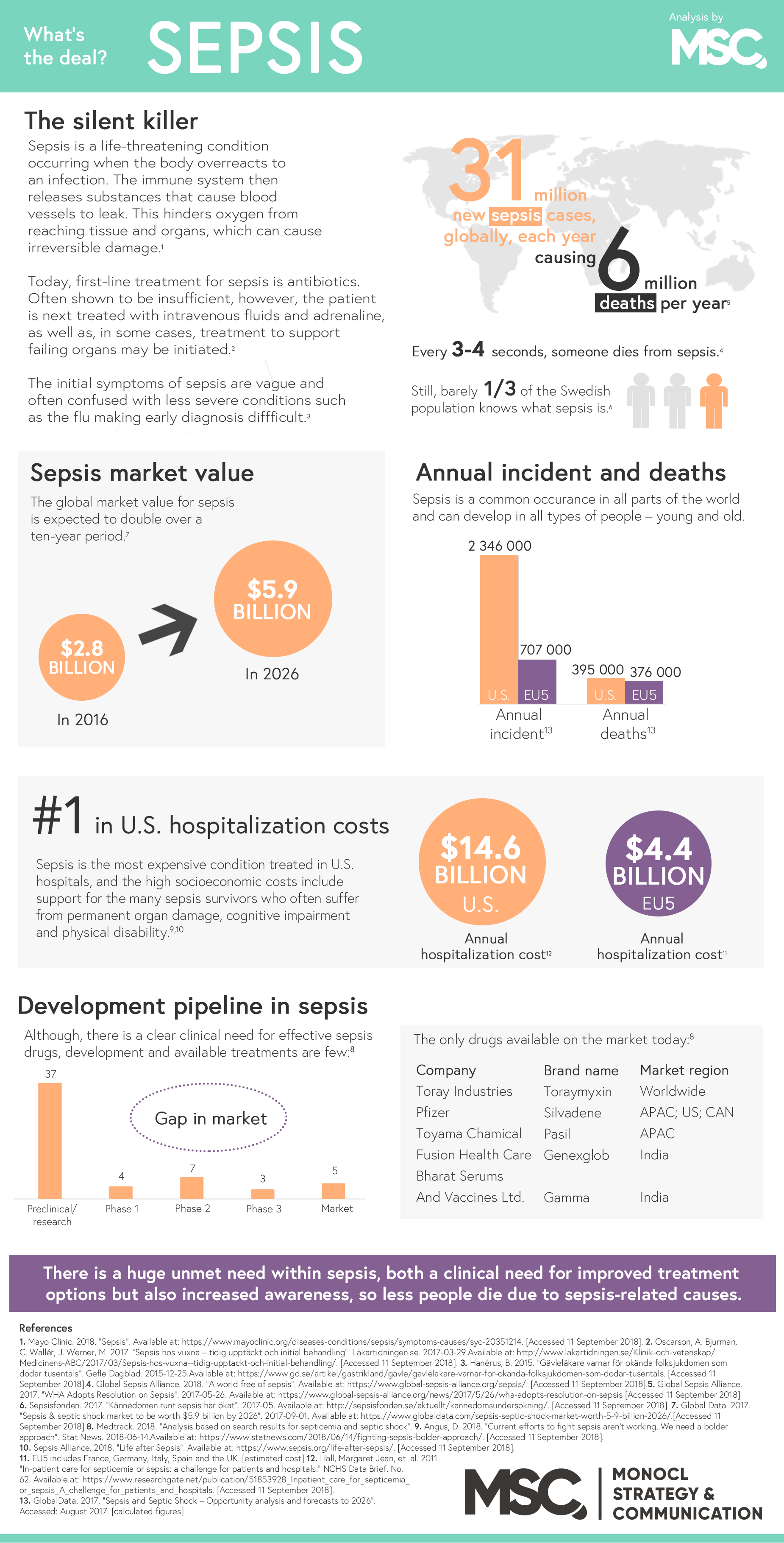Held on 13th September every year, is World Sepsis Day. A global initiative to put all eyes on this life-threatening condition that annually affects around 31 million people worldwide.

The cause of sepsis, previously known as blood poisoning, is an infection leading the body’s immune system to overreact. The quicker a patient gets diagnosed and treated, the higher is their chance of survival without permanent damage to tissue or organs. However, the condition is difficult to diagnose; partly due to flu-like symptoms, but also the low awareness both among the affected and medical personnel. Today, only one-third of the Swedish population have heard of the condition, a figure that could be fatal.
With sepsis, every hour without treatment increases the risk of dying with 8%.
Leaving sepsis untreated, whether knowingly or not, is a serious error as the risk of dying from sepsis increases with eight percent every hour the condition goes untreated. Death is, however, not only consequence to fear. About 87 percent of sepsis patients suffer from encephalopathy, or decreased brain and cognitive function post sepsis; 64 percent develop kidney injury which in many cases require dialysis; 46 percent will suffer permanent liver damage; 34 percent acute respiratory distress syndrome; and cardiovascular events are seen in 29 percent of advanced sepsis survivors. Other serious complications include amputation, anxiety, and chronic pain, and in around 40 percent of all cases, sepsis survivors require rehospitalization within 90 days of discharge.
The second challenge with sepsis is the treatment. Currently, the majority of current treatment options for sepsis target the infection with antibiotics or adrenaline/liquids to increase low blood pressure. These options fail to treat all aspects of the sepsis such as already induced immune events leaving the patient with untreated organ dysfunction. Despite an estimated market value of 5.9 billion USD in 2026, there are surprisingly few products on the market and little interest in the development of new drugs for the condition due to the low profile of sepsis.
The biggest need is investment into research to support development of new, effective treatments. For this to happen, it is crucial to increase the general awareness of this silent killer among people affected, medical personnel but also decision-makers such as politicians and those with the capability to support endeavors financially. Strong voices from leading patient organization Global Sepsis Alliance drive activities to achieve ‘a world free of sepsis’, joined by the Swedish equivalent Sepsisfonden that has taken upon themselves to spread knowledge to reduce the unnecessary deaths. Now, it is time for the rest of the world to realize that new solutions are desperately needed.




